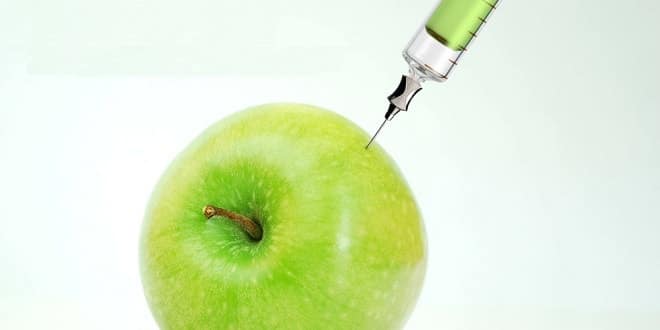E200 – E290
| Number | Name | Comments | |
| E200 | Sorbic acid | either obtained from berries or synthesised from ketene; possible skin irritant | |
| E201 | Sodium sorbate | no known adverse effects | |
| E202 | Potassium sorbate | no known adverse effects | |
| E203 | Calcium sorbate | no known adverse effects | |
| E210# | Benzoic acid | also known as flowers of benzoin, phenlycarboxylic acid, carboxybenzene; added to alcoholic beverages, baked goods, cheeses, gum, condiments, frozen dairy, relishes, soft sweets, cordials and sugar substitutes; used in cosmetics, as an antiseptic in many cough medications and an antifungal in ointments; can cause asthma, especially in those dependant on steroid asthma medications, is also reputed to cause neurological disorders and to react with sulphur bisulphite (222), shown to provoke hyperactivity in children; obtained from Benzoin, a resin exuded by trees native to Asia | |
| E211 | Sodium benzoate | used as antiseptic, as a food preservative and to disguise taste, as of poor-quality food; orange soft drinks contain a high amount of it, upto 25mg per 250ml; also in milk and meat products, relishes and condiments, baked goods and lollies; used in many oral medications including Actifed, Phenergan and Tylenol; known to causes nettle rash and aggravate asthma | |
| E212 | Potassium benzoate | people with a history of allergies may show allergic reactions. for using see 210 | |
| E213 | Calcium benzoate | see 212 | |
| E214 | Ethyl p-hydroxybenzoate | avoid it, banned in some countries | |
| E215 | Sodium ethyl p-hydroxybenzoate | avoid it, banned in some countries | |
| E216 | Propyl p-hydroxybenzoate | possible contact allergen | |
| E217 | Sodium propyl p-hydroxybenzoate | avoid it, banned in some countries | |
| E218 | Methyl p-hydroxybenzoate | allergic reactions possible, mainly affecting the skin | |
| E219 | Sodium methyl p-hydroxybenzoate | avoid it, banned in some countries | |
| E220 | Sulphur dioxide | derived from coal tar; all sulphur drugs are toxic and restricted in use (in USA, FDA** prohibits their use on raw fruits and vegetables), produced by combustion of sulphur or gypsum; known to provoke asthma attacks and difficult to metabolise for those with impaired kidney function, also destroys vitamin B1; typical products are beer, soft drinks, dried fruit, juices, cordials, wine, vinegar, potato products | |
| E221 | Sodium sulphite | decontaminating agent used in fresh orange juice; see 220 | |
| E222 | Sodium hydrogen sulphite | see 220 | |
| E223 | Sodium metabisulphite | treating agent, see 220 | |
| E224 | Potassium metabisulphite | see 220 | |
| E225 | Potassium sulphite | see 220 | |
| E226 | Calcium sulphite | avoid it, banned in some countries | |
| E227 | Calcium hydrogen sulphite | avoid it, banned in some countries | |
| E228 | Potassium hydrogen sulphite | see 220 | |
| E230 | Biphenyl, Diphenyl | banned in some countries; can be used for agricultural purposes; typical products are citrus fruit | |
| E231 | Orthophenyl phenol | banned in some countries; can be used for agricultural purposes; typical products are pears, carrots, peaches, plums, prunes, sweet potatoe, citrus fruit, pineapples, tomatoes, peppers, cherries, nectarines | |
| E232 | Sodium orthophenyl phenol | see 231 | |
| E233 | Thiabendazole | banned in some countries, can be used for agricultural purposes, typical products are citrus fruits, apples, pears, potatoes, bananas, mushrooms, meat, milk | |
| E234 | Nisin | antibiotic derived from bacteria; found in beer, processed cheese products, tomato paste | |
| E235 | Natamycin | mould inhibitor derived from bacteria; sometimes used medically to treat candidiasis; can cause nausea, vomiting, anorexia, diarrhoea and skin irritation;.typical products are meat, cheese | |
| E236 | Formic acid | avoid it, banned in some countries | |
| E237 | Sodium formate | avoid it, banned in some countries | |
| E238 | Calcium formate | avoid it, banned in some countries | |
| E239 | Hexamethylene tetramine | avoid it, banned in some countries | |
| E249 | Potassium nitrite | colour fixative and curing agent for meat; nitrites can effect the body’s ability to carry oxygen, resulting in shortness of breath, dizziness and headaches; potential carcinogen; not permitted in foods for infant and young children | |
| E250 | Sodium nitrite | may provoke hyperactivity and other adverse reactions, potentially carcinogenic, restricted in many countries, can combine with chemicals in stomach to form nitrosamine, the HACSG* recommends to avoid it | |
| E251 | Sodium nitrate | also used in the manufacture of nitric acid, as a fertiliser and in fermented meat products (see 250) | |
| E252# | Potassium nitrate | may be derived from waste animal or vegetable matter; used in gunpowder, explosives and fertilisers, and in the preservation of meat; may provoke hyperactivity and other adverse reactions; potentially carcinogenic; restricted in many countries (see 249) | |
| E260 | Acetic acid | main component of vinegar, synthetically produced from wood fibres; used in pickles, chutneys, and sauces | |
| E261 | Potassium acetate | food acid; should be avoided by people with impaired kidney function; typical products are sauces, pickles | |
| E262 | Sodium acetate, Sodium diacetate | food acid, acidity regulator; no known adverse effects | |
| E263 | Calcium acetate | food acid, acidity regulator; by product in the manufacture of wood alcohol; used to make acetic acid (vinegar) and in the production of dyers mordants | |
| E264 | Ammonium acetate | can cause nausea and vomiting | |
| E270# | Lactic acid | food acid, acidity regulator; produced by heating and fermenting carbohydrates in milk whey, potatoes, cornstarch or molasses; difficult for babies to metabolise; used in sweets, dressings, soft drinks (sometimes beer) infant formulas and confectionary | |
| E280 | Propionic acid | all propionates are thought to be linked with migraine headaches; propionates occur naturally in fermented foods, human perspiration and ruminants digestive tract, also can be derived commercially from ethylene and carbon monoxide or propionaldehyde or natural gas or fermented wood pulp; produced when bacteria decompose fibre; commonly used in bread and flour products; | |
| E281 | Sodium propionate | may be linked to migraines, typical products are flour products | |
| E282 | Calcium propionate | see 281 | |
| E283 | Potassium propionate | see 281 | |
| E290 | Carbon dioxide | propellant, coolant, derived from lime manufacture; may increase the effect of alcohol; typical products are wine, soft drinks, confectionary | |
| E296 | Malic acid | derived from fruit or synthetic; infants and young children should avoid it | |
| E297 | Fumaric acid | derived from plants of the genus Fumaria esp. F.officianalis or from the fermentation of glucose with fungi; can be used to flavour, acidify, as an antioxidant or raising agent used in soft drinks and cake mixes | |



